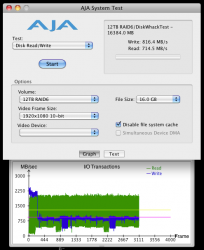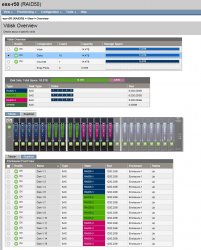I'm curious who's using large RAID arrays (12+TB) of HDs?
What RAID level are you using? RAID5, 6, 10, ???
Have you ever had to rebuild the array? Has that been problematic?
Of course, the common wisdom is that RAID5 is dead (too risky with large arrays) but I'm curious if anyone's defying this in practise.
In my case, my media collection has out grown my current collection of JBOD drives and it would be a lot of effort to rebuild if I lost a disk, so I'm going to implement an external RAID array for my Mac Mini Plex media center and I think I'm pretty much settled on RAID10 due to the issues with parity RAID on large arrays, but interested in other's experiences.
What RAID level are you using? RAID5, 6, 10, ???
Have you ever had to rebuild the array? Has that been problematic?
Of course, the common wisdom is that RAID5 is dead (too risky with large arrays) but I'm curious if anyone's defying this in practise.
In my case, my media collection has out grown my current collection of JBOD drives and it would be a lot of effort to rebuild if I lost a disk, so I'm going to implement an external RAID array for my Mac Mini Plex media center and I think I'm pretty much settled on RAID10 due to the issues with parity RAID on large arrays, but interested in other's experiences.



